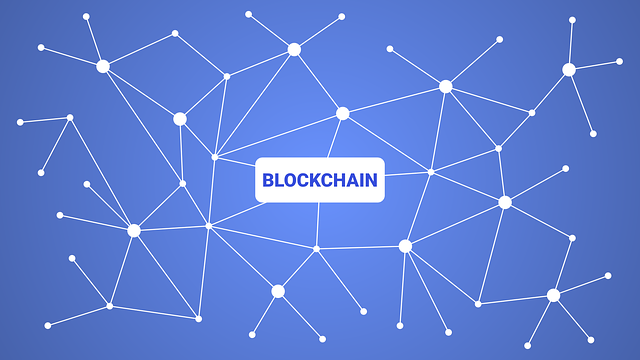The Development Of Blockchain Solutions

As we grow up, our brains have a data (memory) storage capacity somewhere between 10 and 100 terabytes. Though this is a lot of data space, human beings have a limitation on their data retrieval capability. According to decay theory, data stored in the human brain can become distorted or disintegrate. Whereas, data collected by computers does not erode.
The usage and retrieval of data has been a key focus area for the business community in the past 70 years. In the last decade, there has been much discussion on data analytics in an effort to improve speed, accuracy, and efficiency within the user interface. Although progress has been made, the full potential associated with The Internet of Things (IoT) and Artificial intelligence (AI) has not yet been reached. However, IoT, AI, and to some extent cloud solution objectivity has reached a level of promising scalability.
Ever-evolving user expectations have given rise to new challenges in the fields of data mining, data analytics, and data integrity. We can think of these essential data operations in two separate categories: data enablement (mining/prediction/analytics), and data integrity (trust and transparency). Solutions have evolved to make integration possible between data enablement and data integrity. One of the most innovative solutions, of integrating data analytics and data integrity components together, is referred to as blockchain. Blockchain is a digital structure consisting of a growing number of data records otherwise known as blocks that are cryptographically linked together through the usage of timestamped hashes. These cryptographic hashes also contain transaction data and history. The creation of block chain resulted as a response to lack of data integrity. This ledger of data records can record two-way transactions and is highly resistant to modifications of data due to the inherent system set-up. Blockchain ledgers validate and securely maintain data whereas data learning and data mining purely evaluate data for actionable insights.
Data Enablement: With an increase of user demands and with their resulting sophisticated expectations, data size and complexity has substantially increased. This sophistication has required data professionals to innovate and develop easy user-friendly solutions. In order to take on multifaceted user expectations, technology must use an integrated approach.
Data Integrity: With an increased emphasis ineconomic scalability, profit, quality and eco-friendly initiatives, business must reveal greater trust and transparency. In our
In our current business landscape, competitive advantages are based on quality in all areas of business: products/services, research and development capabilities, managerial capabilities, profitability, data integrity (including quality, visibility, and transparency), and the resulting corporate image
By 2020, Gartner has predicted that almost twice as many organizations (60%) will invest in multiple data security tools to help bolster data integrity protection, including data loss prevention, encryption, and data-centric audit and protection tools. As mentioned earlier, one of the hallmarks of blockchain technology is the creation of trust between the consumer and the business. By design, blockchains are naturally resistant to data modifications. Once data records are created, they become irreversible. Blockchain has established real-time data integrity and transparency, which is vital to the appraisal system. Although blockchain technology can be used in a variety of industries, this discussion focuses specifically on blockchain enablement within the area of supply chain management.
Present State of Growth in Blockchain
In a recently published article by three of McKinsey’s partners, they concluded that the use of blockchain is still in the infancy stages. It has not yet matured or evolved into a game changing supply chain solution. Even so, there are specific industries (finance, shipping/logistics, healthcare, food, and the overall supply chain sector) that have already begun to institute blockchain technology into their daily operations and are seeing promising growth and future success from their implementation efforts.
Financial Institutions:With blockchain, real time settlement is possible.
- Banks are able to block questionable transactions or track abnormal activities.
- In the field of scrip or paper trading (stocks, bonds, commodities, and currency), blockchain technology is able to offer improved speed and efficiency in computerized resolution and settlement. In fact, blockchain was originally invented to monitor bitcoin transactions. More recently, NASDAQ patented a blockchain-based system to track trades.
- Wider acceptance will be enabled through predictive analytics and mobile image-based receipt capturing and transmission scanning into locked formats.
Shipping/Logistics Industry: With blockchain, shippinginformation and movement are transferred to a digital ledger and easily tracked on the new blockchain platform including:
- Country of origin
- Shipping and arrival ports
- Transportation method
- Customs records and details
Healthcare Industry: With blockchain, patient information (health issues, prescriptions, treatments) is recorded in digital format with real time data records and timestamps. Data can easily be used by insurance companies, healthcare providers, pharmacies, or clinical researchers.
For example, Germany-based SAP (Systems, Applications & Products in Data Processing) has worked with many pharmaceutical and shipping companies to track the pharma supply chain, ensuring authenticity in goods and services. A SAP-enabled cloud platform has been piloted with many companies to give abstract bulletins to the pharma community about built-in integration information, making it easier to meet compliance at a global level.
Food Industry: With blockchain, food industry professionals can spot fraudulent or contaminated products.

For example, food fraud costs the global food industry an estimated $10 to $15 billion annually. There have been instances in the past where non-organic products were passed off as organic, and other products were not what the end user thought they were.
- In 2017, IBM announced a collaboration with key food producers and distributors (including Kroger, McCormick and Company, Dole, Golden State Foods, Nestlé, Tyson Foods, Unilever, and Walmart) to identify and pinpoint the source of contamination in the global food supply chain using IBM’s cloud-based solution and blockchain (the IBM Food Trust). This system connects participants through a transparent, permanent, and shared record of food origin details, processing data, shipping details, and more.
- The S-Group (a Finnish retailing cooperative) has implemented its “Pike-Perch Radar” service using IBM blockchain technology to track fish fillets sold in its stores from lake to processing plant to the retailer.
- Blockchain technology tests were also conducted by Bext360 (a software solutions company) tracking all elements of the worldwide coffee trade—from farmer to consumer.
- Hyperledger Sawtooth (an enterprise blockchain solution owned by Intel) successfully tested Pacific Tuna seafood verification in 2017 (Sawtooth’s plan).
Other Blockchain Benefits
Data Streaming Platform: Blockchain driven platform Streamr provides a decentralized means for just about anyone to buy and sell data. The platform incorporates a combination of Ethereum (a decentralized application platform) and the IoT. Real time data on traffic (road, air, and water) congestion integrated with weather forecasts can be handy for a travel provider or agency.
RFID Tags: Kouvola Innovation (a logistics solutions company) uses RFID tags to communicate shipping requirements to various carriers allowing shippers to bid on the shipments. Blockchain technology tracks all of the shipments.
Networking: Cisco’s Low Power and Lossy Networks (LLNs) are designed to easily handle as few as 10 devices, and can easily be scaled up to over 1 million devices. Cisco utilizes blockchain technology to help create a network based on IoT concepts.
Fraud Detection and Corrective Action: Everledger, using a Hyperledger platform, developed a blockchain solution for the diamond supply chain which is designed to help prevent fraud and illicit global diamond trading. Alibaba adopted blockchain to fight food fraud and track cross boarder shipments.
Cross Boarder Supply Chain: E-commerce Companies like T-Mall (Alibaba,) Rakuten (Japan e-commerce), Carrefour (European retail chain), Amazon, and Walmart are actively adopting blockchain platforms to track their supply chain and safeguard against counterfeit products.
Security and Privacy of Data: Blockchain works on a decentralized system where it is nearly impossible to alter data at any level of transaction, making data safer on a larger platform.
Predictive Analysis: Socio-economic predictions are further refined by using data transparency. Characteristics like customer preferences, customer lifetime value, dynamic prices, and churn rates can be forecast with better accuracy.
Conclusion
Ninety-four percent of consumers feel that the brands they purchase do not disclose how the product is made and what it consists of. There is lack of trust and transparency missing from our present supply chain system. The pragmatic use of blockchain technology can and will be a game changer in the supply chain industry.